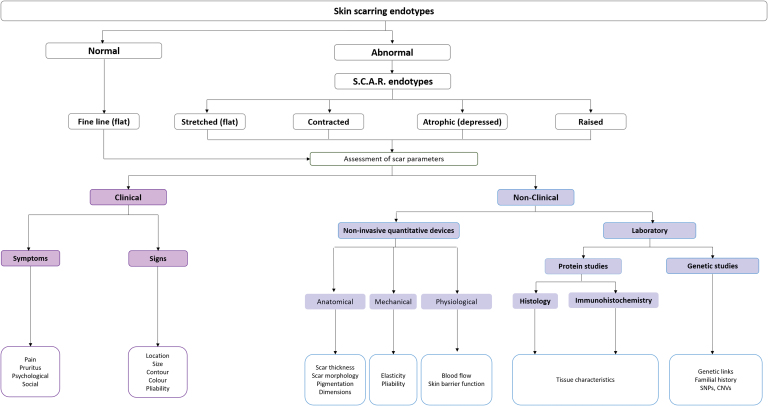Figure 3.
Proposed structured assessment. A flowchart to demonstrate a proposed structured assessment and the range of scar endotypes that they can be subdivided under normal and abnormal with abnormal including stretched, contracted, atrophic, and raised endotypes. Assessment of scar parameters including clinical and nonclinical methods. Clinical including assessment of scar signs and symptoms. Nonclinical including the use of noninvasive quantitative devices evaluating the anatomical, mechanical, and physiological parameters that can be measured for all scar types in humans. Examples of anatomical parameters (scar thickness, morphology, pigmentation, and dimensions) are presented, mechanical parameters (pliability and elasticity), and physiological parameters (skin barrier function, blood flow, and inflammation). All parameters that are measured are then validated by laboratory methods including gene and protein studies. CNVs, copy number variations; SNPs, single nucleotide polymorphisms. Color images are available online.

